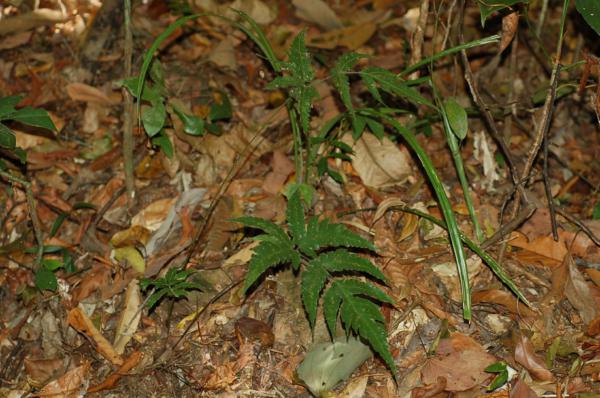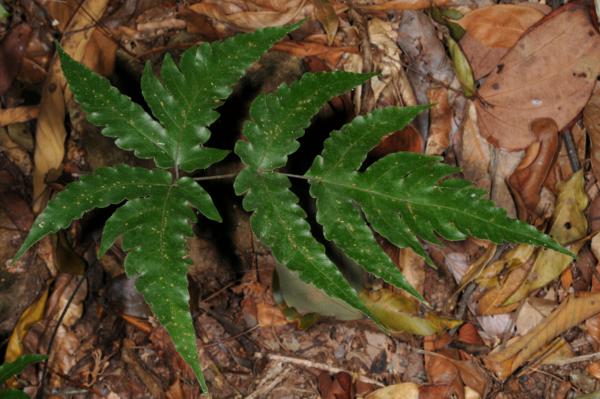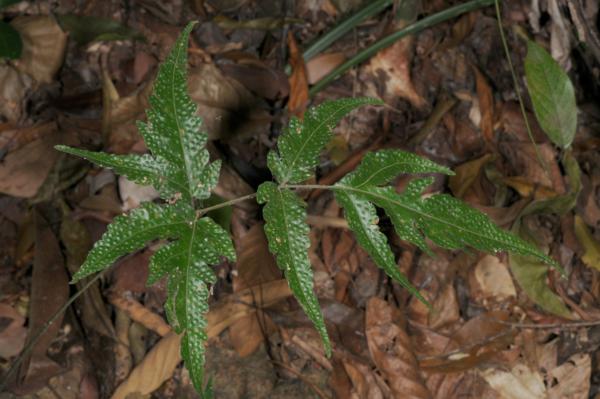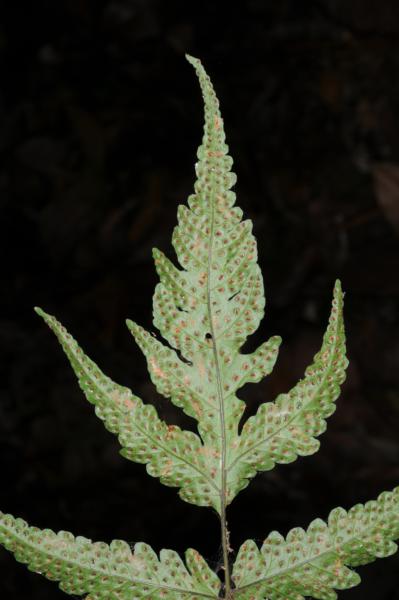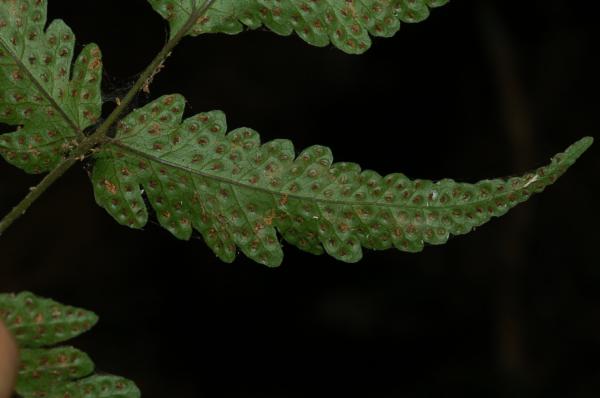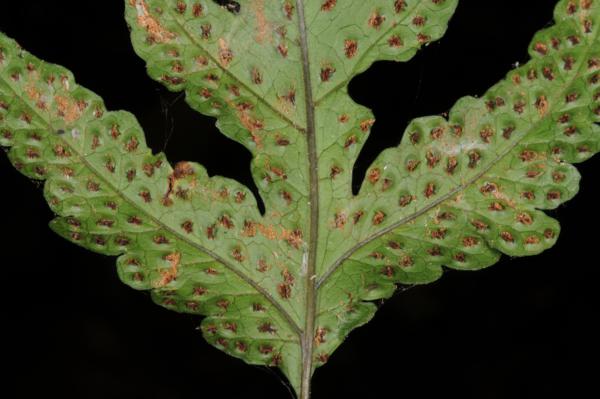
Tectaria impressa (Fée) Holttum
Family
Tectaria impressa (Fée) Holttum
Nomenclature
Tectaria impressa (Fée) Holttum, Kew Bull. 43: 483. 1988; Tagawa & K.Iwats., Fl. Thailand 3: 621. 1988; Holttum, Fl. Males., Ser. II, Pterid. 2: 51. 1991; Boonkerd & Pollawatn, Pterid. Thailand: 162, 163, 218. 2000; Newman et al., Checkl. Vasc. Pl. Lao PDR: 32. 2007. – Phlebigonium impressum Fée, Gen. Fil.: 314. 1852. – Type: Griffith s.n., Ind. Or. (RB).
Aspidium variolosum Wall. ex Hook., Sp. Fil. 4: 51. 1862; Bedd., Handb. Ferns Brit. India: 216, f. 111. 1883; Christ, Bot. Tidsskr. 24: 108. 1901; C.Chr., Bot. Tidsskr. 32: 419. 1916. – Nephrodium variolosum (Wall. ex Hook.) Hook. & Baker, Syn. Fil.: 298. 1867; Ostenfeld, Bull. Herb. Boiss. II. 5: 721. 1905. – Tectaria variolosa (Wall. ex Hook.) C.Chr., Contr. U.S. Natl. Herb. 26: 289. 1931; Ching, Sinensia 2: 21, pl. 3. 1931; Tardieu & C.Chr., Fl. Indo-Chine 7(2): 412. 1941; Holttum, Rev. Fl. Malaya ed. 1, 2: 506, f. 298. 1955 [‘1954’]; Holttum, Dansk Bot. Ark. 20: 31. 1961; Holttum, Dansk Bot. Ark 23: 242. 1965; Tagawa & K.Iwats., SouthE. Asian Stud. 5: 97. 1967; Tagawa & K.Iwats., Fl. Thailand 3: 368. 1988; Boonkerd & Pollawatn, Pterid. Thailand: 163. 2000; Newman et al., Checkl. Vasc. Pl. Lao PDR: 32. 2007. – Type: Wallich 379, Nepal.
Sagenia membranifolia auct. non Christ: Hosseus, Beih. Bot. Centralbl. 28(2): 366. 1911.
Tectaria brachiata auct. non (Zoll. & Moritzi) Morton: Newman et al., Checkl. Vasc. Pl. Lao PDR: 32. 2007.
Description
Rhizome short, creeping, ascending or erect, 35 mm diam.; scales linear, hairy at margin, rather stiff, bicoloured by nearly black central portion with brown ferrugineous edges or concolorous brown, up to 7 by 0.8 mm. Stipes pale brown to castaneous, 15–35 cm in sterile and up to 60 cm in fertile fronds, densely pubescent on adaxial surface, glabrous beneath. Laminae ovate-subdeltoid or pentagonal, up to 40 by 30 cm, tripinnatifid at base; lateral pinnae 2–4 pairs, the basal pinna much the largest, stalked, asymmetrically subtriangular, acute at apex, with one or two basal basiscopic pinnules; upper pinnae shortly stalked, deeply lobed or with a free sessile basal basiscopic pinnule; apical pinna subdeltoid, cuneate and a little decurrent at base, deeply lobed to pinnatifid; herbaceous, green, glabrous on laminar surface; rachis and pinna-rachis with dense articulated hairs above, glabrous beneath; veins forming copious anastomosis with included veinlets. Sori terminal on free included veinlets, round, usually in a single row at each side of midrib, more or less raised on upper surface; indusia up to 1 mm diam., persistent, glabrous .
Distribution in Thailand
Throughout Thailand, especially on limestone.
Distribution in Laos
Champasak, Khammouane, Xieng Khouang.
Distribution in Cambodia
Kampot, Mondulkiri, Pursat.
Wider Distribution
N India, SW China, Indochina, Taiwan, W Malaysia to Java.
Ecology
On rather dry mountain slopes in not so dense forests at low to medium altitudes up to 900 m alt., especially on limestone, fairly common throughout Thailand.
Proposed IUCN Conservation Assessment
Least Concern (LC). This species is common and widespread and not under any known threat.
Voucher specimens - Thailand
Middleton et al. 4605, Trat, Ko Chang, Thanmagon Waterfall (E).
Voucher specimens - Laos
Maxwell 97-1165, Champasak (CMU); M.F. Newman LAO 191, Khammouane, Nam Theun (E).
Voucher specimens - Cambodia
Long et al. CL407 & CL476, Mondulkiri (P).
Habit
Sterile frond
Fertile frond
Lower surface of lamina
Fertile pinna
Sori
Site hosted by the Royal Botanic Garden Edinburgh. Content managed by Stuart Lindsay, Gardens by the Bay, Singapore and David Middleton, Singapore Botanic Gardens. Last updated 24 January 2012
